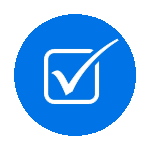Chapter 06. Managing the Internal Auditing Function
Introduction

This chapter outlines the structural, leadership, strategic, quality assurance, and change management considerations necessary for managing an internal audit function that aligns with organizational objectives and adapts to the evolving business environment. It begins by exploring the structure of the internal audit department, discussing the advantages and disadvantages of centralized versus decentralized functions, and detailing the roles and responsibilities within the audit team. It emphasizes the importance of establishing clear reporting lines to maintain independence and objectivity. It considers how the structure of the audit department should be designed to match the size and complexity of the organization.
Leadership and development of audit teams are addressed next, highlighting the critical leadership skills required for effective audit management. The importance of performance evaluations, team building, and managing diversity within audit teams is also discussed to ensure a dynamic and inclusive work environment. Strategic planning for the internal audit function is then discussed, outlining how to align audit strategies with organizational goals and risks. This includes conducting strategic assessments, setting objectives, allocating resources effectively, and developing flexible audit plans that adapt to changes within the business or its external environment. The engagement of stakeholders in the strategic planning process and the importance of regularly monitoring and revising the strategic plan are emphasized to ensure ongoing relevance and effectiveness.
Quality assurance and improvement programs (QAIP) are explored, detailing their importance in internal auditing to ensure compliance with standards and facilitate continuous improvement. The challenges of maintaining quality assurance standards and best practices for quality improvement are discussed to help audit functions meet and exceed expectations.
Finally, managing change within the audit function is examined, considering the drivers of change, such as technological advancements, regulatory updates, and shifts in organizational strategies. Strategies for leading successful change initiatives, communicating effectively with the audit team and stakeholders, and managing resistance are outlined. This section also highlights the benefits of adopting agile and flexible approaches to change management and shares lessons learned from case studies on managing change within internal audit functions.
 Learning Objectives
Learning Objectives
By the end of this chapter, you should be able to
- Design an internal audit structure that aligns with organizational needs for optimal risk coverage and resource utilization.
- Acquire skills to effectively lead and develop audit teams, focusing on innovation, professional growth, and a supportive work culture.
- Master strategic alignment of internal audit functions with organizational goals, focusing on risk management and adaptive audit planning.
- Understand the development and implementation of Quality Assurance and Improvement Programs (QAIP) to enhance audit quality and operational effectiveness.
- Learn practical strategies for managing change within audit functions to maintain relevance and effectiveness in a dynamic business environment.

